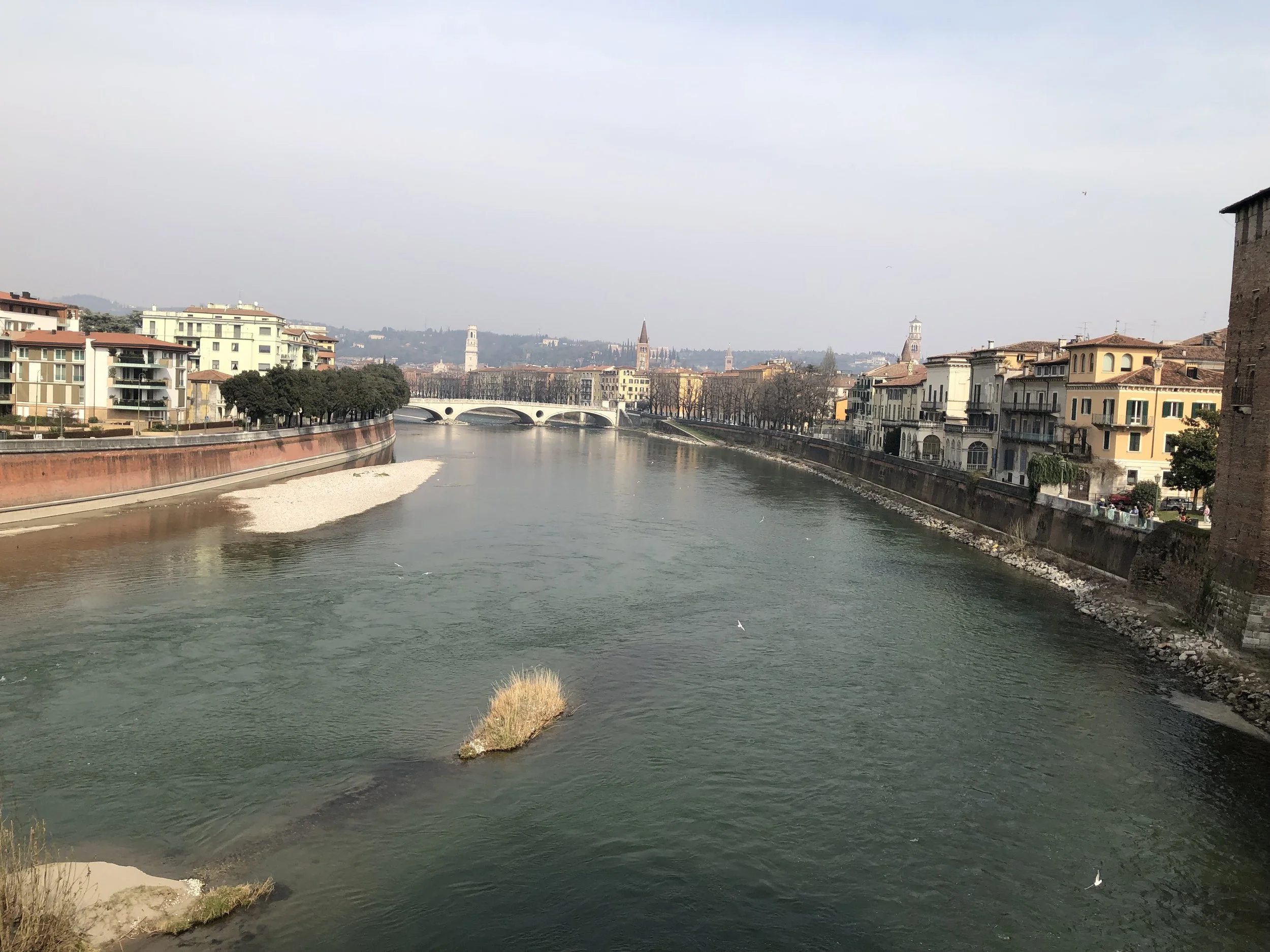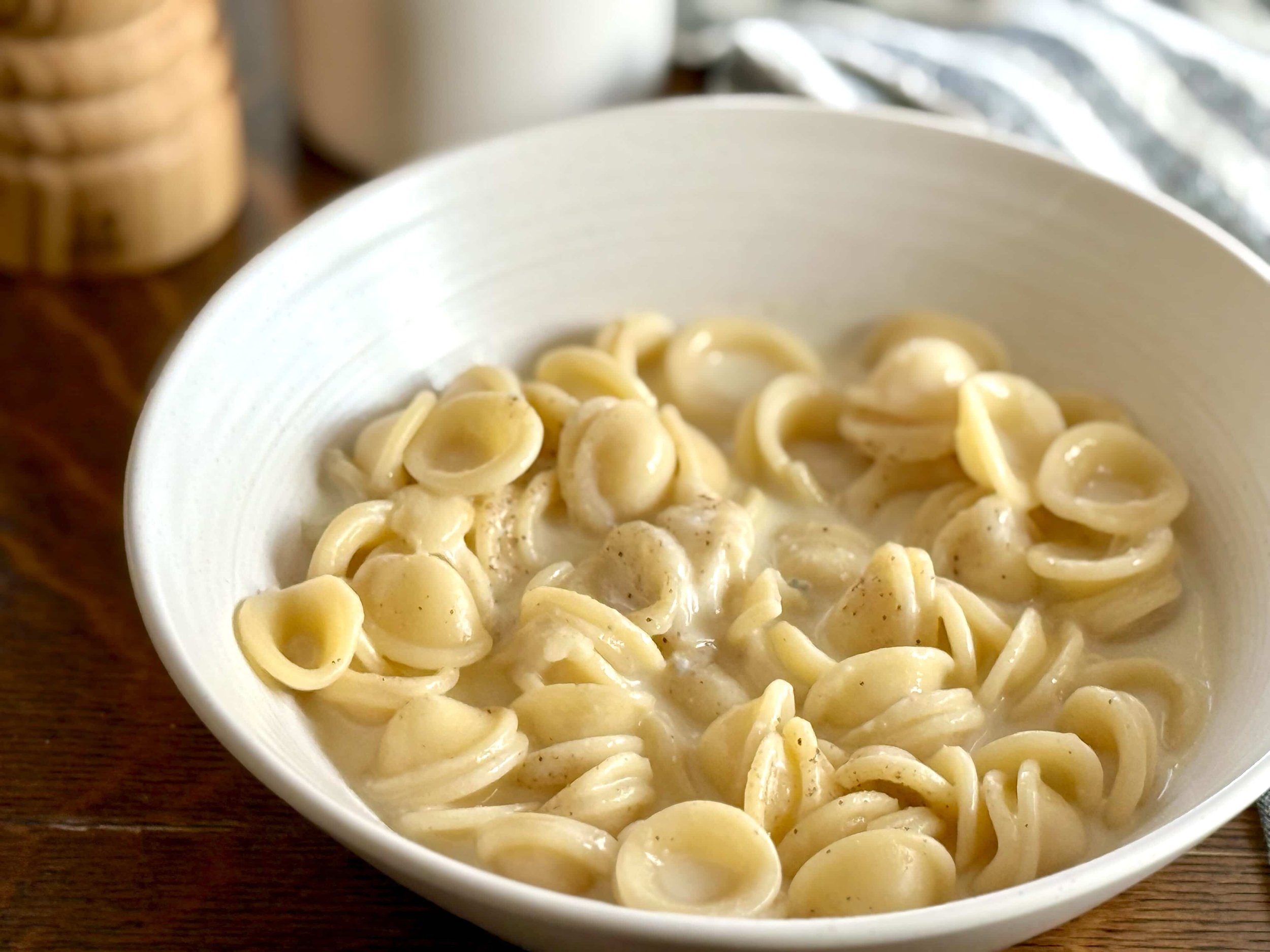Living in Italy: The Art of Grocery Shopping
/Last Updated July 28, 2024
While I was originally going to include this segment on grocery shopping (yes, grocery shopping) as part of a different post, I realized I had enough to say on the subject to warrant its own post.
No gloves? Good eye, this photo was taken in France
Why grocery shopping? If you think about it, it’s something that most human beings do on a weekly basis and we probably take if for granted. But when you’re in a new country or even a new city, these everyday errands can be invaluable in getting a glimpse into the new culture you’re in.
If you’ve moved to Italy for however long, sooner or later you are going to have to stop eating out all the time (you can’t live off margherita pizzas and gelato forever) and start cooking for yourself in your new (most likely fun-sized) kitchen.
If you’re looking for help on where to find specific ingredients in Italy, check out my post on Hard-to-Find Ingredients in Italy.
This post may contain affiliate links. If you make a purchase using these links, Jennyblogs may receive a small commission, at no extra cost to you. This helps to support Jennyblogs. Where possible, links are prioritized to mall businesses and ethically and responsibly made items. For further information see the privacy policy. Grazie!
The grocery stores
Supermarket prices are roughly the same in Italy as you would find in the US. So if you’re trying to create a budget before moving here, keep it the same. If you spend $50 a week on groceries, budget 50euro. Maybe 55 as a safety net for when you uh, buy the wrong products. Like when my friend and I bought laundry softener accidentally instead of detergent? Yeah. Our laundry smelled SO good. Can’t vouch for how clean it actually was, but dang. Fields of lavanda for days.
The four main grocery stores are Coop, Esselunga, Conad, Carrefour, and I prefer grocery shopping at them in that order. There are also some Pam’s in the city center which have fair prices, and Lidl which is the European equivalent (and I believe same owners) of Aldi. Conad and Carrefour tend to be the most expensive, and you will usually find them in the city center and out. If they’re in the center, they’ll probably be on the smaller side. Coop and Esselunga on the other hand, are usually only found outside city centers and tend to be larger, with parking more readily available, usually in the form of underground parking garages.
I believe all four have some kind of loyalty card, Carrefour is the only one I can’t say for sure.
Coop, as a cooperativo, you have to pay 25euro to get their card and benefit from exclusive sales, among other “advantages” that may or may not be useful to you.
Esselunga has their “Fidaty” card, which is free to get. For every item you buy you acquire points, sometimes on certain products you can get extra points. When you reach 3,000 points you can redeem your points for 27euro off groceries. Otherwise you can save your points and choose something from their prize catalog. (I know someone who saved up their points long enough and got a mini KitchenAid mixer.)
Conad has their Insieme card which is similar to Esselunga’s. Free to obtain and you start collecting points which goes towards prizes. I’ve never shopped enough to ever obtain enough points to do anything with at Conad, but since it’s free it doesn’t hurt whether you decide to get it or not.
The rhythm of grocery shopping
For many reasons, grocery shopping in Italy is not just a once-a-week excursion but a multiple-times-a-week lifestyle. Why?
Food is very much available seasonally, and when you’re getting the best and ripest of produce, it usually doesn’t last a week before going bad! You’ll find many Italians only buying what they need for a few days, ensuring they always have the freshest stuff on hand.
Others, like myself, walk to the grocery store and can only buy as much as can physically be carried. This necessitates shopping more frequently. You could also invest in a “nonna” cart, one of the bags on wheels that many nonne use for their shopping.
The elderly generations themselves also use a daily trip to the grocery store as exercise, and may also serve as their socializing for the day. The strict lockdown during coronavirus only allowed 1 member from each household to grocery shop once a week. I really don’t think that many people complied, as there wasn’t any good way to enforce this rule. In one instance, the police finally cited a man after he was caught at the grocery store for the thirteenth time that day. Yes, thirteenth.
Have an exit plan
As you embark to explore the wonders that Esselunga, Conad, Carrefour, or Coop have to offer, there's something you might want to know. Some grocery stores have entrance and exit gates, and you can only exit if you have a receipt with a barcode. You could flag down one of the employees near the self-checkout and they will let you out, but after my experience of getting trapped because I didn’t buy anything, (I just wanted to see what they had to offer!) I always made sure to buy at least a snack or drink, even if I was just going to the store to check to see if they had a certain item. Maybe I’m the only one who scopes out grocery stores. Ah well. You’ve been warned.
Don’t touch the produce
Whether at an open market or the grocery store, the fruit and vegetables are not to be touched with your bare hands! Or you might get your hand slapped or verbally accosted by some nonna. Plastic bags and gloves are provided so you can rifle through for the best peaches without sullying them.
I do sometimes rebel, especially if I only need one or two things from the produce section and don’t want to waste a glove. Then I will be careful to eyeball the produce and only touch the fruit I buy. Hint: If you only need say, 3 apples, and do want to look them over before choosing them, use your empty bag as a makeshift glove to turn over some apples. Then when you’ve chosen your three, take your hand out of the bag and use your bare hand to touch only the three you want.
A lady once came up next to me to get some peaches and apologized as she chose some without a glove. I told her not to worry. In case she hadn’t noticed, I also was glove-less and clearly not about to rebuke her for a sin I was already committing. Two rebels in the store. Camaraderie.
Don’t forget the mercati
Speaking of produce, it’s much more enjoyable to have one or two days a week set aside for getting your fresh produce from an outdoor mercato. The produce is usually the freshest and you can develop relationships with your favorite vendors. Not only is it a much more rewarding experience to buy your produce from someone you know, you’re supporting local farms and hey, they just might start giving you some deals if they like you! Not to mention some of them have recommendations or recipes they’re willing to share!
I used to shop once a week at the Mercato di San Lorenzo when I lived closer to the center, and there was one dear old signore that I would often buy my produce from. He would frequently sneak some surprise pieces in my bag when he thought I wasn’t looking (it’s normal for the vendors to select the produce you want instead of you getting it yourself) and I would have to figure out what to do with them when I got home. That’s how I discovered khaki/persimmons, actually! I’m pretty sure he would always round the price down for me, but then again I’ll never really know because he lumped and weighed everything together, would think a moment, then tell me the price. The receipt only ever gave the total price, but a couple euros for several different kinds of deliciously ripe fruits and veggies didn’t seem a bad deal to me. Even if he was rounding the price up, I was blissfully ignorant and still consider it a great memory.
I also love the Mercato di Sant’Ambrogio. They have some unique stalls, and if you go on the right days you can even find scoby for sale to make your own kombucha or apple cider vinegar with the mother.
How to wait in line - “fare la fila”
Basically, if you’re not breathing down the person’s neck in front of you, you’re doing it wrong. If you’re not doing it right, you will get cut. Waiting in line is all a part of the Italian life. No one likes lines, no one wants to wait, and those who know how to queue in Italy know you might have to be pushy, aggressive, and perfect your evil eye.
You know you’re queueing with Italians and people who live in Italy when:
You can smell what kind of shampoo the person in front of you uses, or lack thereof
When you take a small step backwards you step on someone
The line looks more like a mob than a line
Someone comes to wait in line and stands next to you instead of behind you
That same person shifts ever more forward every time the line moves up
Someone asks if you’re in line, which is really just a lightly veiled threat meaning, “if you don’t keep your spot clearly, I will take your spot”
Someone blatantly cuts the line
When a cutter is called out, they will either act innocently as if they didn’t know or just completely ignore everyone and continue forward anyway. Either way.
Someone genuinely asks where the end of the line is, because you never can tell
In my early days in Italy a lady once asked if I was waiting in line for bread. When I said I was, she then informed me I had best move up or the Italians will cut me. It was kind of her to instruct my green American self. I think? Or it was another manifestation of #6.
Grocery carts
Smaller grocery stores in the center might not have the big metal carts, but they will have the smaller plastic “baskets” on wheels.
At the larger stores you’ll find the metal carts which can be used with a coin deposit. Confession: I’ve only ever used a big cart once, at Lidl, because I had to in order to enter during the coronavirus lockdown. In my scramble to unlock a cart and not lose my place in line, I tried inserting a 20 cent piece. Hint, it didn’t work. However, 50 cent pieces and 1euro pieces do. I prefer to use the smaller rolling baskets as it keeps my shopping realistic. I walk to the grocery store so can only buy as much as I carry.
What to buy where
Over time you will develop your own favorite stores and where you can find certain products or find the best deals. My favorite store is Coop, and yet I often can’t find spicy peppers. No jalapeños, habaneros, nothing. (Italy never labels their peppers. They’re either sweet, spicy, or bell. Sigh.) Every store has their quirks. I also was convinced for years that sour cream hardly exists here. I could only find it at my local Esselunga in the tiny Mexican food section. It’s imported, expensive, and not refrigerated, which doesn’t set well with me. Just the other day, while strolling the refrigerated section at Coop, what did I see? Sour cream. Normal, not sour cream. Aside from these things, there are certain ingredients you just can’t find in any of these grocery stores, or at least if you do, you’ll be paying an arm and a leg. 5+euro for Skippy peanut butter, anyone?
Here are some hints to get you started:
Although some stores may have a small end cap or section dedicated to Asian, Mexican, or Arab foods, skip their higher prices and go to the sources themselves.
For Asian ingredients around Florence, there are numerous Asian grocers around the city to satisfy all your rice noodle, ramen, soy, rice vinegar, and coconut milk needs. And peanut butter. Random brands, but almost always cheaper.
For Mexican ingredients, head to Vivi Market in Florence. Although not an exhaustive source, they have a few shelves of tortillas, chips, sauces/salsas, and beans to get you by. They are also a reliable source of sweet potatoes and random American ingredients, like Reese’s, you may not find anywhere else. The downside to Vivi is their prices, they’re one of the more expensive Asian grocers.
For Arab food, head to any of the Arab butchers around the city. This is where you can find cheaper black beans, harissa, dates, peanut butter, and other specialty ingredients if you are familiar with Middle-Eastern/North African cuisine.
While Lidl might not have the biggest selection, they definitely have some of the cheapest options. I usually buy cheddar cheese, bretzels, hummus, maple syrup, and other random goodies that you can’t find in a normal Italian grocery store. They also have a little Greek section, so if you have a hankering for maybe not the best baklava, there you go. You’re welcome.
When it comes to buying meat, think of it the same way as the produce. The big grocery stores are the most convenient, but if you want the best quality, you might consider visiting your neighborhood butcher. Again, you’re supporting local, and being a regular customer might just get you some deals. Italy is more of a “I do you a favor, you do me a favor” type society, rather than the more American independent ideology.
Grocery bags
Every grocery bag at the grocery store will run you 5-10 cents a piece. They are usually biodegradable, but it’s a good way to save some pennies and the economy by bringing your own bags. I never go anywhere without a few plastic and reusable bags in my purse for when I need to unexpectedly pick up some things while out and about.
There you have it, more information than you probably ever needed to know about grocery shopping in Italy!





























